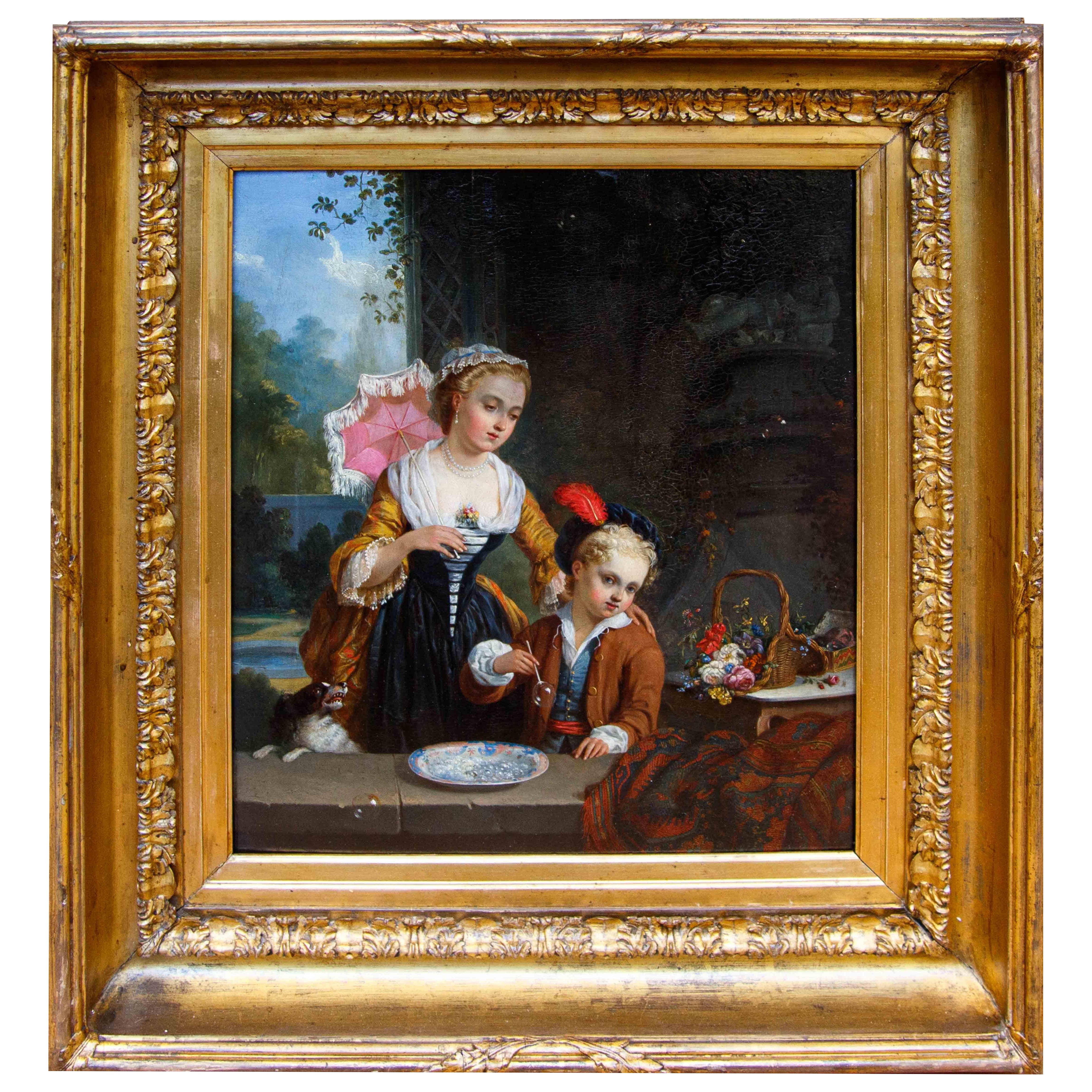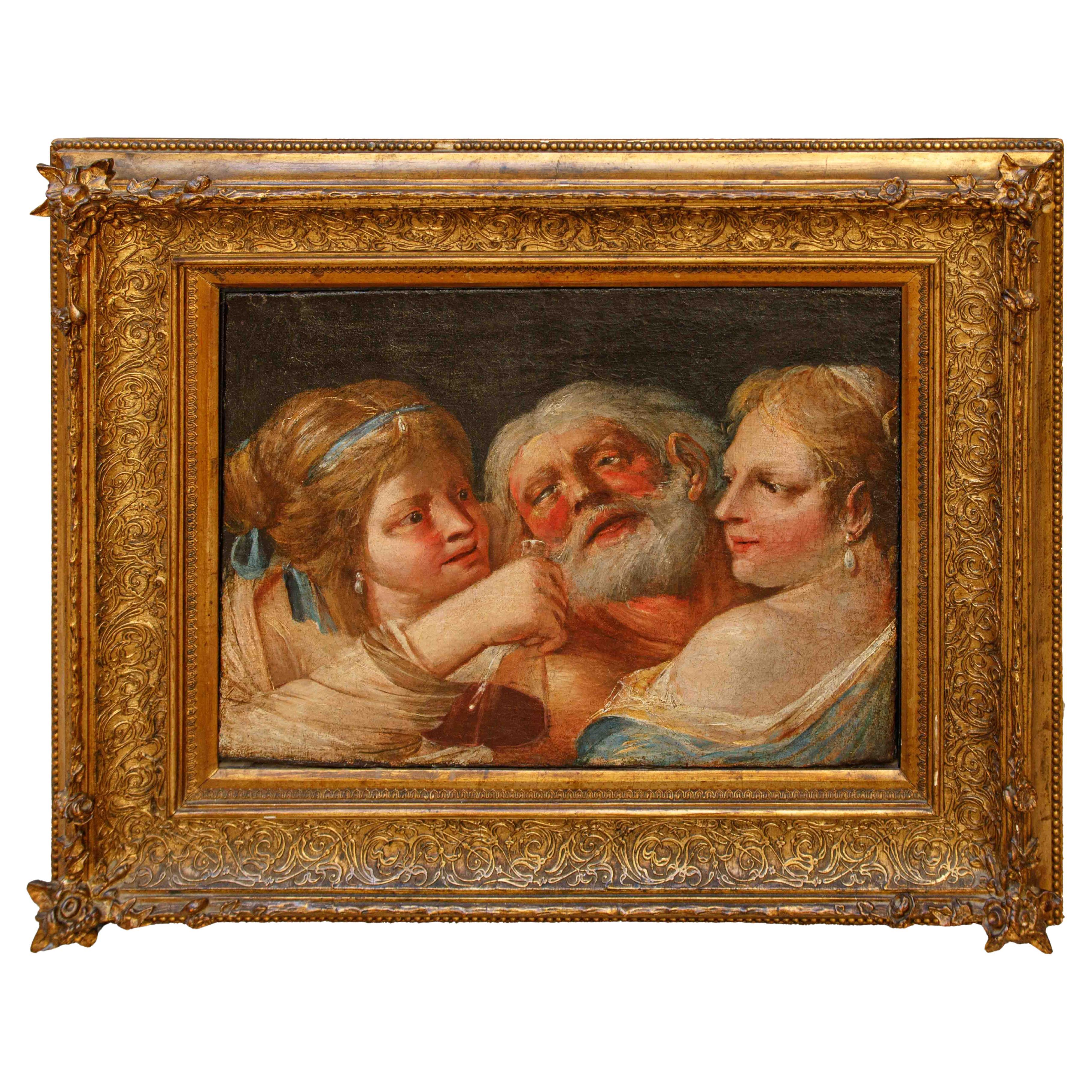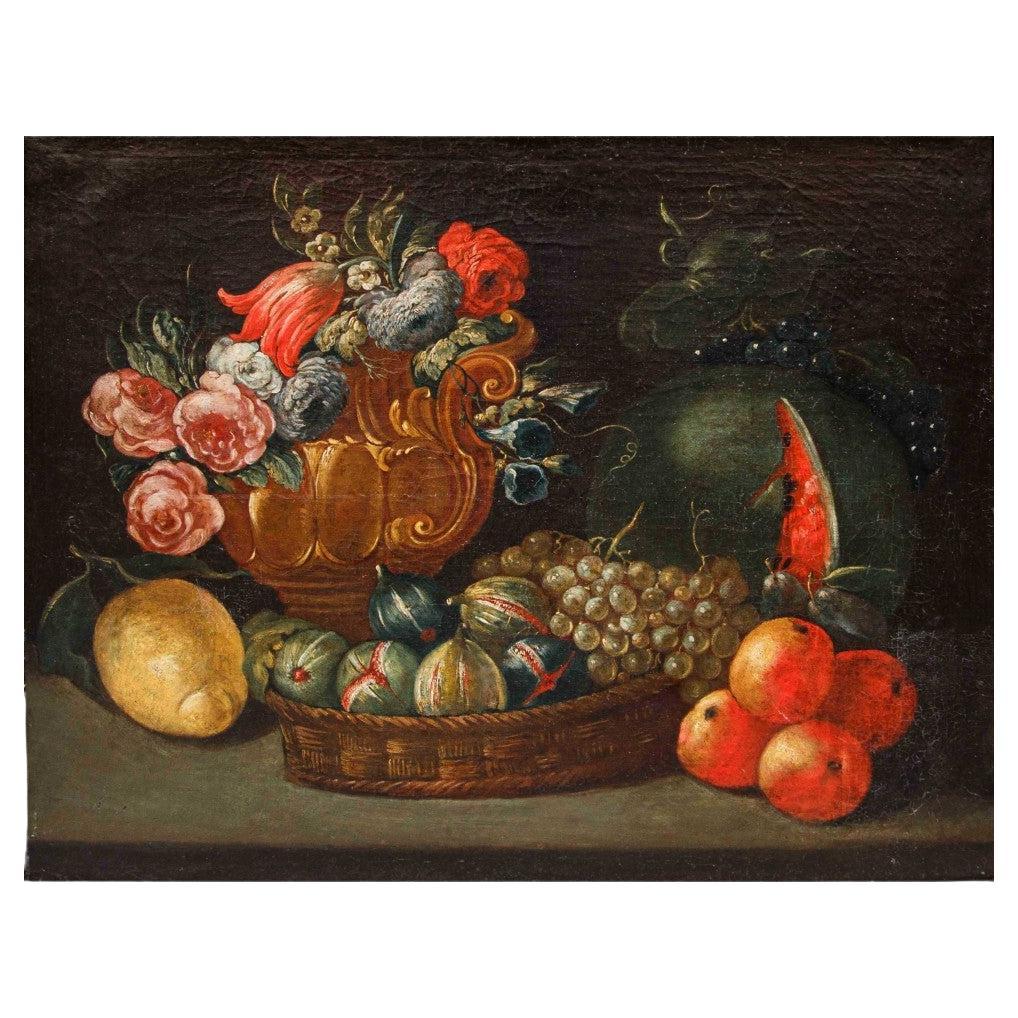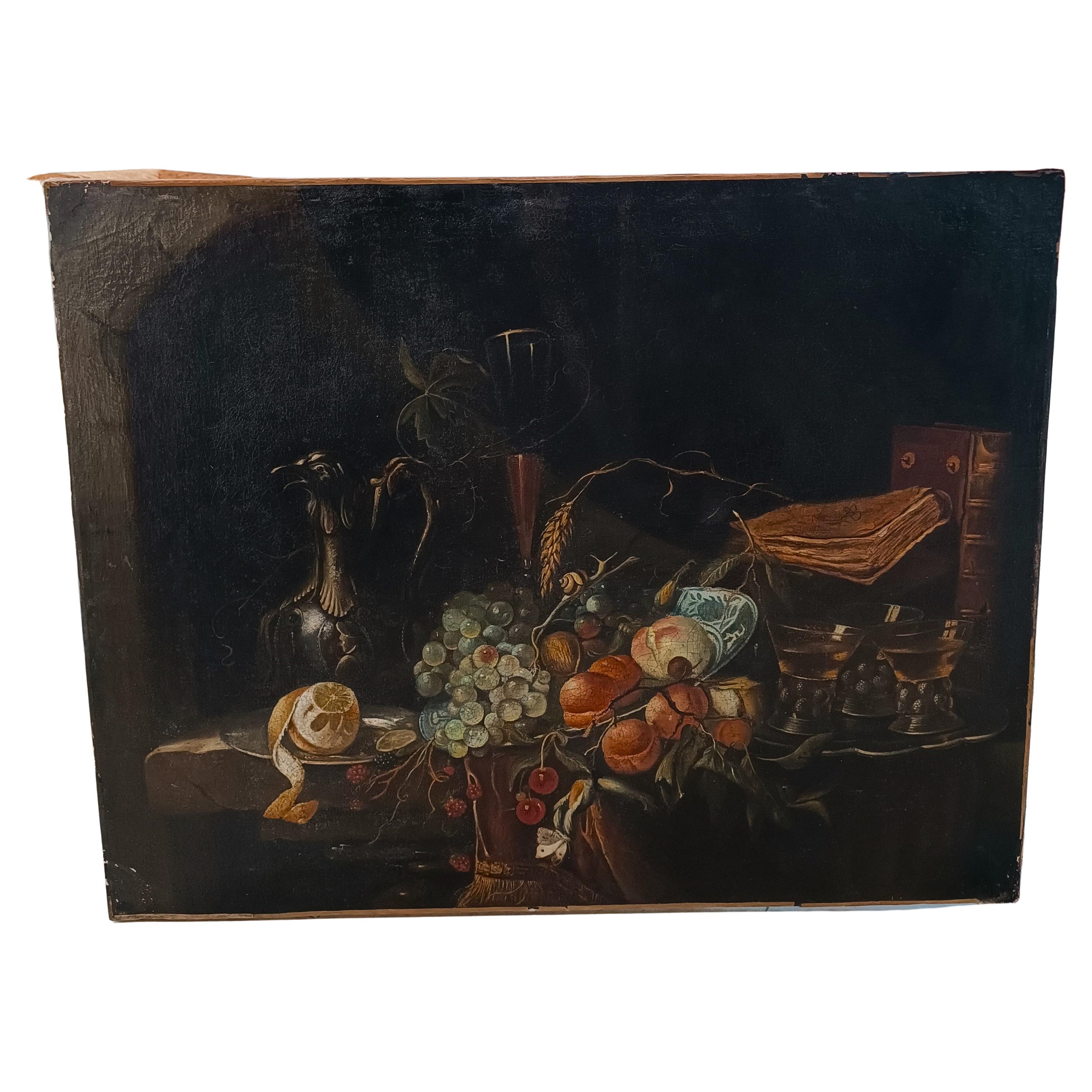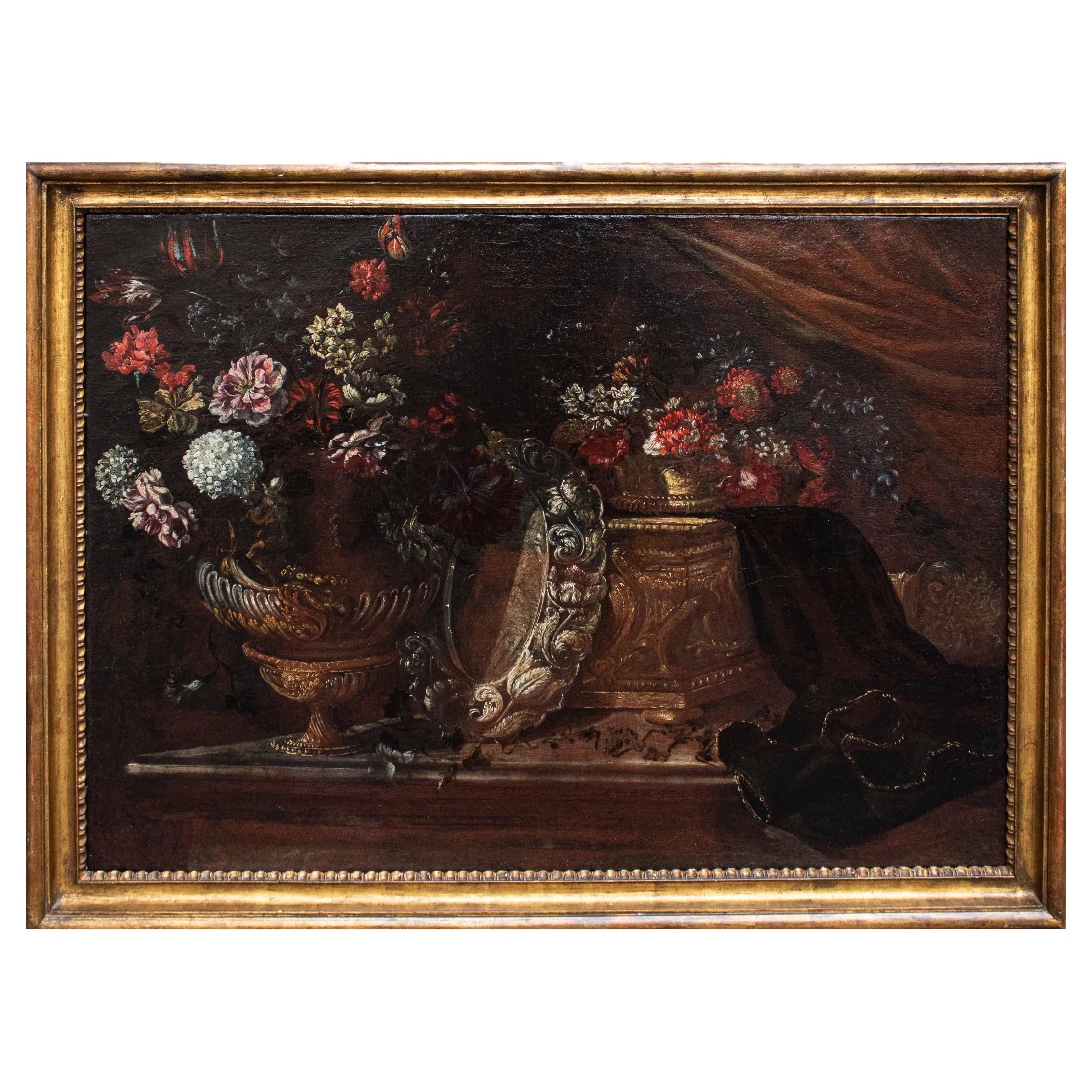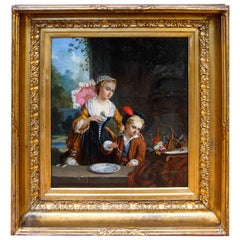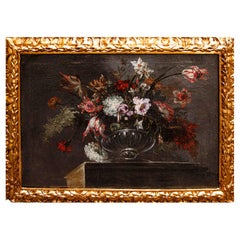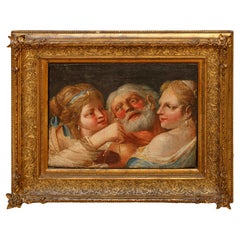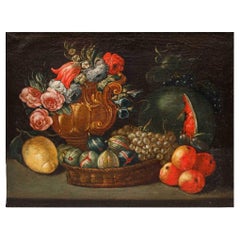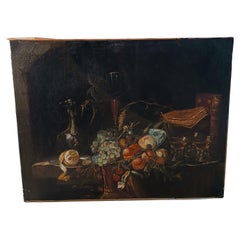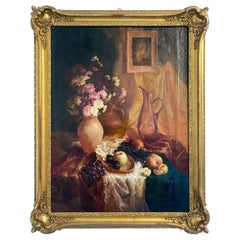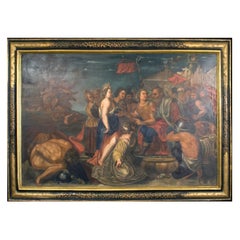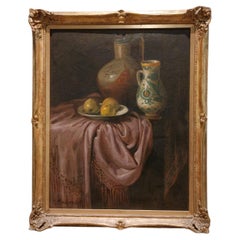Items Similar to Roman school, second half of the 17th century, Composition with lemons and small dog
Want more images or videos?
Request additional images or videos from the seller
1 of 12
Roman school, second half of the 17th century, Composition with lemons and small dog
$6,405.81
£4,852.55
€5,500
CA$8,874.38
A$9,953.21
CHF 5,212.34
MX$120,941.17
NOK 66,187.99
SEK 62,750.88
DKK 41,875.72
About the Item
Roman school, second half of the 17th century
Composition with lemons and small dog
Oil on canvas, 97.5 x 74.5 cm
Framed, 120 x 95 cm
The work we describe here can be framed in the still life style that blossomed in Rome during the seventeenth century, involving both Italian artists and foreign painters, especially French and Flemish, who came to the city in search of rich commissions and artistic novelties to learn in order to enhance their qualities. The names that come closest to this work are those of Pier Francesco Cittadini (1616-1681) and Francesco Noletti known as the Maltese but for a long time also known as Fieravino (1611-1654). Originally from Milan the former and from Malta the latter, both found themselves working in the Urbe, where they tried their hand at the Still Life genre, achieving great success both in terms of patrons and in terms of followers and imitators. Cittadini had other experiences beforehand as well: a pupil of Daniele Crespi in Milan first and of Guido reni in Bologna later, he only landed more decisively on still life once he arrived in Rome, where he got to know the French artists who practiced this particular genre there. More focused and purified from the other genres turns out instead to be Noletti, who came directly to Rome from the small island of Malta, which earned him the nickname the Maltese, he immediately distinguished himself, even among the Northerners as Jacques Coelemans' engravings and Jacques Hupin's reproductions show , for the high lenticular quality of his works, particularly in the rendering of the fabrics of the Turkish-style carpets that constantly appear in his canvases, similarly to the one haphazardly resting on the raised floor. Continuing with the similarities, we find the presence of the metal tray with fruit, apples and lemons, but especially the metal vase at the foot of the scene; these elements capable of enhancing the reflections of light in the dark setting are typical in Noletti's still lifes while the presence of the small dog or, in general, an animal element, which we find in many of Cittadini's works, on the other hand, is rare. The space behind is not particularly bright but is shown to be open by means of an arch that frames a corner of cloudy sky; this breath toward the open as well as the very description of the architectural elements that perimeter the room are also elements that appear somewhat absent in the Maltese artist's production, but which are found in Cittadini: an example is the canvas preserved at the National Gallery of Ancient Art in Trieste, or the one in the Galleria Estense in Modena, where we can also detect the animal presence in the cat attacking the cage containing a small bird. The game, therefore, is played between different peculiarities, coexisting and arising in the same city but by two different artists who nevertheless knew how to identify a certain commonality in the figurative choices of this genre; this work sums up the analytical texture of the oriental carpet and the precious reverberation of the metal with the greater airiness of the background and the dynamic presence of the small dog, demonstrating the ability to reconcile the choices of two artists who left a huge furrow in the history of Roman still life and beyond.
- Dimensions:Height: 37.8 in (96 cm)Width: 29.14 in (74 cm)Depth: 1.97 in (5 cm)
- Style:Other (In the Style Of)
- Materials and Techniques:Canvas,Oiled
- Place of Origin:
- Period:
- Date of Manufacture:XVII Century
- Condition:Wear consistent with age and use.
- Seller Location:Milan, IT
- Reference Number:1stDibs: LU5918245122752
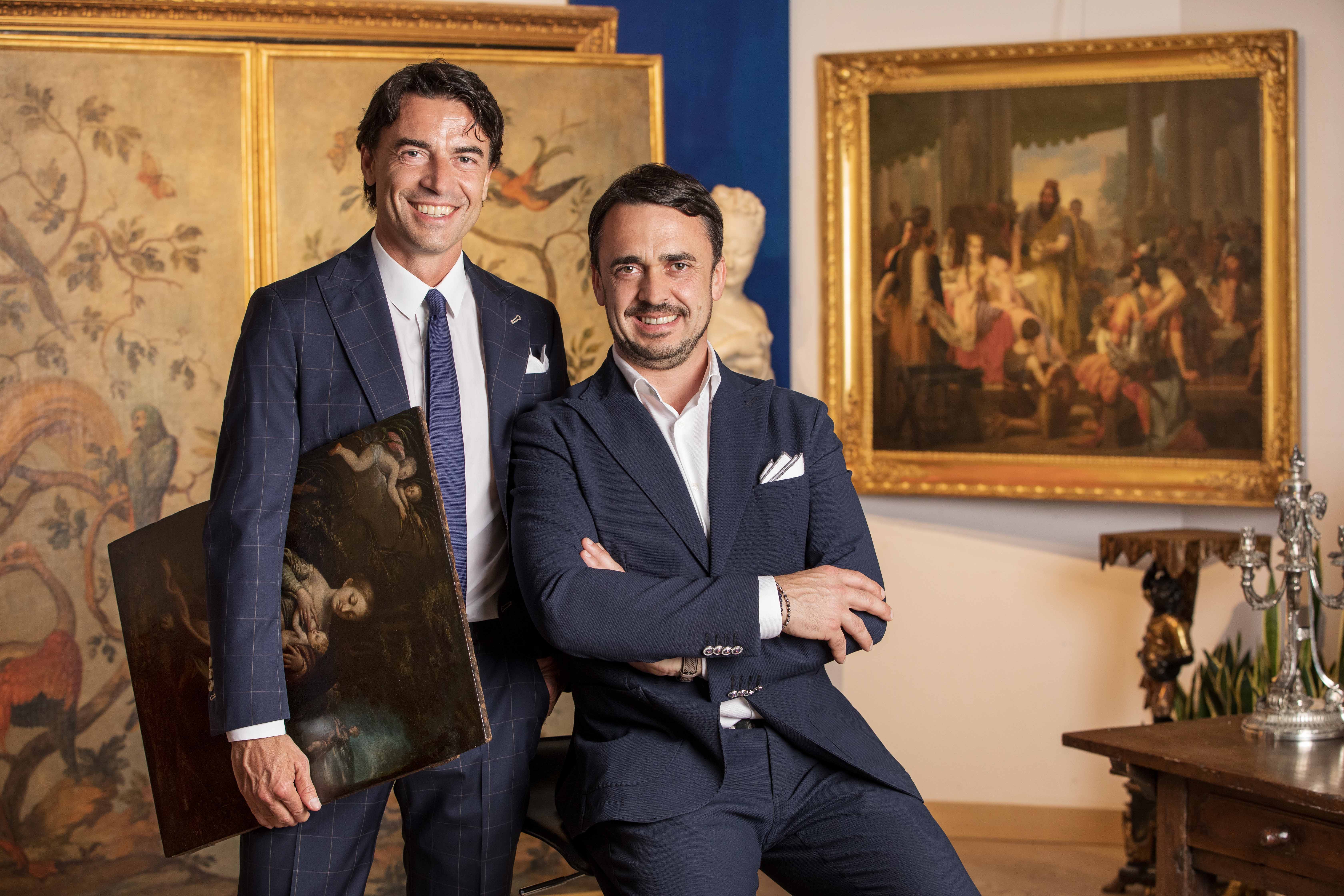
About the Seller
5.0
Vetted Professional Seller
Every seller passes strict standards for authenticity and reliability
Established in 2000
1stDibs seller since 2021
30 sales on 1stDibs
- ShippingRetrieving quote...Shipping from: Milan, Italy
- Return Policy
Authenticity Guarantee
In the unlikely event there’s an issue with an item’s authenticity, contact us within 1 year for a full refund. DetailsMoney-Back Guarantee
If your item is not as described, is damaged in transit, or does not arrive, contact us within 7 days for a full refund. Details24-Hour Cancellation
You have a 24-hour grace period in which to reconsider your purchase, with no questions asked.Vetted Professional Sellers
Our world-class sellers must adhere to strict standards for service and quality, maintaining the integrity of our listings.Price-Match Guarantee
If you find that a seller listed the same item for a lower price elsewhere, we’ll match it.Trusted Global Delivery
Our best-in-class carrier network provides specialized shipping options worldwide, including custom delivery.More From This Seller
View All18th-19th century, French school, the soap bubbles
Located in Milan, IT
French school, 18th-19th century
The soap bubbles
Oil on panel, 44.5 x 36.5 cm
Framed, 60 x 54 cm
In this French school painting, with its leery and playful tone, but mother lovi...
Category
Antique 19th Century Other Paintings
Materials
Canvas
Neapolitan school, 18th century, Flower vase on marble base
Located in Milan, IT
Neapolitan school, 18th century
Flower vase on marble base
Oil on canvas, 54 x 73 cm
Framed, 64 x 83 cm
The still life depicting, foreshortened from below, a metal vase on a ston...
Category
Antique 18th Century and Earlier Other Paintings
Materials
Canvas
Venetian school, mid-18th century, Loth and daughters
Located in Milan, IT
Venetian school, mid-18th century
Loth and the daughters
Oil on canvas, 43 x 57 cm
Framed, 70 x 84 cm
The canvas under consideration clearly depicts Loth and his daughters, the p...
Category
Antique 18th Century and Earlier Italian Other Paintings
Materials
Canvas
19th century, Still life with fruits
Located in Milan, IT
19thC
Still life with fruits
Oil on canvas, 64 x 52 cm
The still life analyzed presents a mixture of floral and fruit elements arranged in a circular order on a table covered with...
Category
Antique 19th Century Italian Other Paintings
Materials
Canvas
Oil painting on canvas depicting Still life Roman school of the 17th century
Located in Milan, IT
Roman School, 17th century
Still Life
Oil on canvas, 79 x 107 cm
Framed, 93 x 121 cm
The work under scrutiny, depicting a majestic still life of flowers, is ascribed to the 17th...
Category
Antique 17th Century Paintings
Materials
Canvas
Venetian school, Tobias and Sara in Nineveh, oil on canvas, 16th century
Located in Milan, IT
Venetian School, second half of the 16th century
Tobiah and Sarah led to Nineveh by the archangel Azariah
Oil on canvas, 48 x 56 cm - Framed, 58 x 72 cm
The present canvas, made w...
Category
Antique 16th Century Paintings
Materials
Canvas
You May Also Like
Flemish Oil on Canvas, 1800s: Still Life with Fruit
By A. Manzoni
Located in Villa Verucchio, Emilia-Romagna
Discover the Elegance of 1800s Flemish Oil on Canvas: Still Life with Fruit
Art is a universal language, capable of enriching spaces and souls. The 1800s Flemish oil on canvas, depic...
Category
Antique 19th Century Belgian Baroque Paintings
Materials
Canvas
Antique oil painting "Still Life," signed, France, early 1900s
Located in Traversetolo, IT
Splendid oil painting "Still Life" executed in the early 1900s.The manner in which this still life was executed shows a pictorial conception devoted to a total realism that takes int...
Category
Vintage 1910s French Other Paintings
Materials
Canvas, Wood
$2,608 Sale Price
42% Off
Large historical painting 18th century, Italian school
Located in Cesena, FC
Large historical painting 18th century, Italian school
"Darius' mother pleading before Alexander after the battle of Issus."
Oil on canvas 210 x 290 cm
Painted with great strength...
Category
Antique Late 18th Century Italian Paintings
Materials
Canvas, Wood, Giltwood
Still life with tablecloth, two pitchers and a plate with apples
Located in Milano, IT
The large painting depicts a table covered with a large draped mauve tablecloth, a large ceramic pitcher with decorations on a gray background, a smaller pitcher decorated with flora...
Category
Antique 19th Century Paintings
Materials
Paint
European School Oil on Canvas of 20th Century
By Europa
Located in Madrid, ES
European school oil on canvas of 20th century
Measures: 72 x 62 cm and 39 x 30 cm
Good condition.
Category
20th Century Spanish Baroque Paintings
Materials
Paint
Italian Renaissance Fruit Still Life
Located in Queens, NY
Italian Renaissance style still life of fruit with gold serving pieces displayed in front of a green drape in a gilt carved frame
Condition: Good; Wear consistent with age and use
Category
Late 20th Century Renaissance Paintings
Materials
Paint
More Ways To Browse
18th Century Maltese Furniture
Solid Oak Dressers
Stainless Steel Beds
Step Back Chest
Sugar Mold
Sun Disk
Teak Elephant
Tin Molds Antique
Tribal Drum
Vallauris Jug
Victorian Bureaus
Vintage 1970s China Cabinet
Vintage Bank Boxes
Vintage Coke
Vintage Quail
Vintage Schumacher
Vintage Spring Chair Outdoor
Vintage Tiffany China
